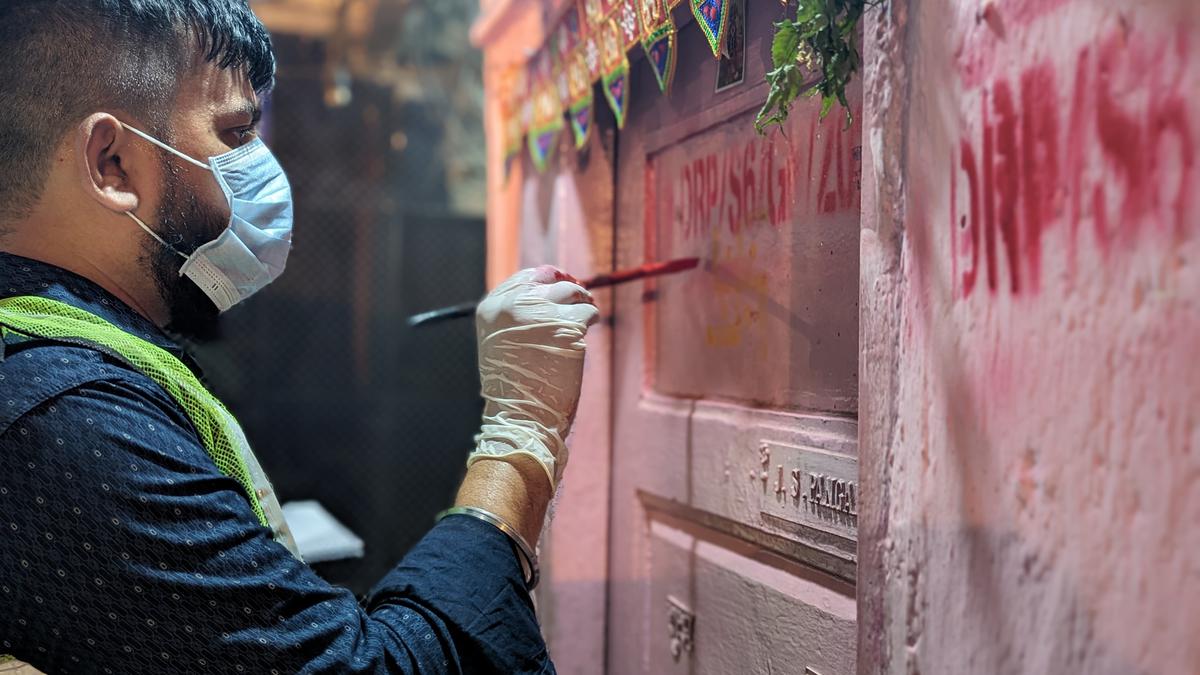
Dharavi redevelopment survey begins, activists flag concerns over zone selection
The Hindu
Survey for Dharavi's redevelopment begins in Kamala Raman Nagar, Matunga, with unique house numbering, aiming for digital transformation.
The survey for Dharavi’s redevelopment began from Kamala Raman Nagar in Matunga, Zone 2 of the plan, on March 18. The process will take about six to eight months.
The Dharavi Redevelopment Project Private Limited (DRPPL), a joint venture between Adani Realty and the Maharashtra government, began the survey by giving unique numbers to the houses. This will be followed by a laser survey, also known as the ‘lidar survey’ of each lane. Subsequently, the survey team will visit each tenement and collect data from each tenement holder.
The project was important and the survey had begun on Monday, S.V.R. Srinivas, CEO, of DRPPL, said. “Based on this survey, all our future development will happen. In the survey, a unique ID number is given to each property, [and to] homes, shops, and educational and religious institutes. We began the numbering today but after five-six days, another team will come to store all the data digitally on tablets. The survey is expected to be completed within six to eight months’ time.”
Beginning at 9 a.m. on March 18, the survey had covered about 30 homes by afternoon. The survey includes both the ground floor and upper structures of the homes. “In the first phase, we have started with Kamala Raman Nagar and then it will be carried out in Dharavi also. Our teams will also conduct socio-economic surveys of all households, information on their ancestral details, and collect their documents. I urge the residents to cooperate and help the survey team with their details to complete the project. After the survey, we will be able to decide how many people live here,” Mr. Srinivas said.
This data will be used by the State government to determine rehabilitation eligibility criteria under the proposed redevelopment project. The survey would also create, for the first time, a ‘digital Dharavi’, an advanced library of one of the world’s largest informal settlements, Mr. Srinivas said.
A survey was also conducted in 2008, but the criteria were different back then. “In the earlier survey, the upper structure was not calculated. We will provide free houses under the scheme to all ground floor structures protected according to government policies. The tenants on upper floors will have to opt for hire purchase under the rental housing scheme, which will be conducted on salt pan lands,” he added.
Zone 1, which falls in Dharavi, was not picked to launch the pilot project of survey, and it was Zone 2 in Matunga that has been chosen instead. When asked, survey officer Ankush Nikam said it did not make a great deal of difference. “It was the top management’s call to start the work from Zone 2. It doesn’t make a big difference. Our job is to implement the orders,” Mr. Nikam said.

 Run 3 Space | Play Space Running Game
Run 3 Space | Play Space Running Game Traffic Jam 3D | Online Racing Game
Traffic Jam 3D | Online Racing Game Duck Hunt | Play Old Classic Game
Duck Hunt | Play Old Classic Game











